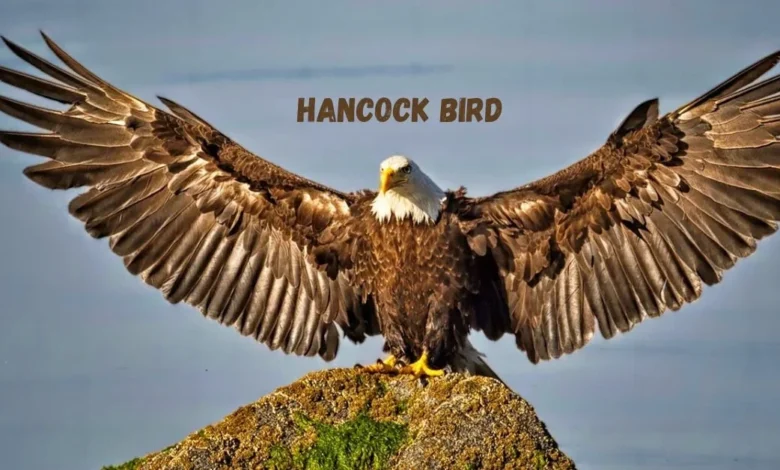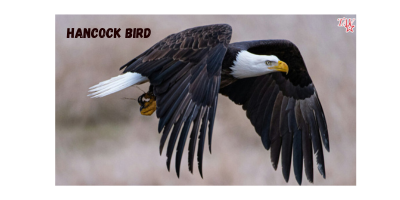Everything You Need to Know About Hancock Birds A Deep Dive into the Species

Hancock Birds are some of the most fascinating creatures on Earth, and among them, the Hancock Bird stands out as a unique and interesting species. Whether you’re an avid birdwatcher or simply someone with a growing curiosity about the avian world, learning more about the Hancock Bird is sure to captivate your imagination. Hancock Birds In this article, we will explore everything there is to know about the Hancock Bird, from its physical features and behavior to its habitat and conservation status. So, let’s dive right in!
Introduction to the Hancock Bird: An Overview of the Species
The Hancock Bird, scientifically known as Lophodytes cucullatus, is a striking waterfowl species native to North America. This bird is part of the Anatidae family, which also includes ducks, geese, and swans. However, what sets the Hancock Bird apart is its distinctive appearance and behavior. With its bold markings and unique mating rituals, this bird has become a subject of interest for bird enthusiasts and researchers alike.
The Hancock Bird’s name is believed to be derived from its first documented sighting by a naturalist named Hancock, although the exact origin of the name is still somewhat debated. Regardless of its name’s origin, this bird’s charm lies in its rare beauty and elusive nature, making it a prized sight for birdwatchers around the world.
Physical Characteristics of the Hancock Bird
The Hancock Bird is often recognized for its striking plumage and vibrant coloration. Males are particularly notable for their distinctive crests, which they raise and lower depending on their mood and the season. Their feathers are predominantly a mix of white, black, and shades of brown, with the male boasting a more pronounced contrast between the colors. Females, on the other hand, tend to have more muted colors but are still quite striking in their own right.
The average size of the Hancock Bird is around 50 cm in length, with a wingspan reaching up to 90 cm. These birds have a relatively compact body, making them highly agile when navigating through their natural environments. Their sharp beaks and strong webbed feet also enable them to hunt effectively in the water, as they primarily feed on aquatic plants and small fish.

Unique Features of the Hancock Bird’s Plumage
One of the most unique features of the Hancock Bird is its plumage, which varies depending on the bird’s age and gender. Males generally sport a bright, bold black and white pattern across their chest, with a distinct crest on their heads that can be raised during courtship rituals. This dramatic display of feathers is often the highlight of the Hancock Bird’s mating behavior, attracting potential mates through its striking visual appeal.
Females, in contrast, have a more understated plumage design. While their feathers are still beautiful, they do not feature the same bold contrasts seen in the males. Instead, they present a subtler mixture of brown and gray tones, which help them blend into their environment. This coloration provides them with a degree of camouflage, protecting them from predators during the breeding season when they are more vulnerable.
Distinctive Mating Behavior of Hancock Birds
The mating behavior of the Hancock Bird is one of the most fascinating aspects of this species. During the breeding season, males perform a series of elaborate displays to impress females. These displays often include the raising of their crests, as well as synchronized movements in the water. Males will puff out their chests and swim around the females in a graceful manner, attempting to showcase their strength and agility.
Once a female has been sufficiently impressed, the pair will engage in courtship rituals that involve mutual preening and synchronized swimming. These displays are essential for pair bonding, and they also serve to establish territory among competing males. The intense competition for mates is a defining feature of the Hancock Bird’s behavior, with males constantly vying for the attention of females during the breeding season.
The Hancock Bird’s Habitat and Distribution
The Hancock Bird is primarily found in North America, particularly in areas with freshwater lakes, ponds, and rivers. These habitats provide the ideal environment for the bird to forage for food, build nests, and raise its young. The bird prefers regions with abundant vegetation, as the dense foliage offers both food sources and protection from predators.
During the winter months, many Hancock Birds migrate to warmer regions. This migratory behavior helps them avoid harsh weather conditions and ensures a steady supply of food throughout the year. The birds are known to travel in small flocks, often seeking out bodies of water in coastal areas or regions with milder climates.
Preferred Nesting Sites of Hancock Birds
When it comes to nesting, the Hancock Bird prefers to settle in secluded areas close to water sources. They often choose areas with dense aquatic vegetation, as these provide both shelter and a steady supply of food. The bird builds its nest using a combination of grasses, reeds, and other plant materials, weaving them together to create a sturdy structure.
Hancock Birds are known to nest in the wilds of wetlands, marshes, and lakeshores, though they can sometimes be found in smaller ponds in rural or suburban areas. These areas provide the perfect conditions for the birds to breed, offering both safety and nourishment.
Feeding Habits of Hancock Birds
The Hancock Bird is an omnivorous species, with a diet that primarily consists of aquatic plants, seeds, and small fish. These birds are excellent swimmers and often forage underwater for food, using their sharp beaks to pluck plants and capture small prey. They are also known to feed on insects and other small invertebrates, particularly during the breeding season when their energy needs are at their highest.
In addition to their underwater foraging techniques, Hancock Birds will occasionally forage along the shores of lakes and rivers, where they feed on berries, grains, and other plant matter. Their ability to adapt their diet based on the available resources ensures their survival in a variety of habitats.
Impact of Seasonal Changes on the Bird’s Diet
As with many migratory species, the diet of the Hancock Bird can change with the seasons. During the summer months, when food is abundant, they tend to rely heavily on aquatic plants and small fish. However, during the winter migration, they may switch to a more plant-based diet, as aquatic plants become scarcer in colder climates. This flexibility in feeding habits is one of the reasons the Hancock Bird can thrive in such diverse environments.
Conservation Status of the Hancock Bird
The Hancock Bird, while not currently listed as an endangered species, does face some threats to its population. Habitat destruction, particularly the draining of wetlands and pollution of freshwater sources, poses a significant risk to the species. These birds rely heavily on healthy ecosystems, so any degradation of their habitat could impact their ability to breed and forage effectively.
Climate change is another factor that may affect the Hancock Bird’s future, particularly with regard to its migratory patterns. As temperatures rise and weather patterns become more unpredictable, the bird may struggle to find suitable habitats or food sources during migration. However, ongoing conservation efforts are aimed at preserving the bird’s natural habitats and ensuring that future generations of Hancock Birds can continue to thrive.
Efforts to Protect Hancock Bird Habitats
There are several organizations and conservationists working to protect the Hancock Bird’s habitats. Efforts include the restoration of wetlands and the implementation of stricter regulations around water pollution. Additionally, conservationists are working to raise awareness about the importance of preserving natural habitats for birds like the Hancock Bird, advocating for changes in land management practices to reduce the negative impacts on the species.
In certain regions, local governments have also introduced protective measures, such as creating bird sanctuaries and monitoring the bird’s population levels. These initiatives are crucial in ensuring that the Hancock Bird continues to have a safe and stable environment in which to live and breed.
Hancock Birds in Popular Culture
Over the years, the Hancock Bird has captured the imagination of nature lovers and artists alike. Its striking appearance and fascinating behavior have made it a popular subject in art and literature. The bird’s elaborate courtship rituals and unique plumage have inspired many to learn more about avian biology and the natural world.
Furthermore, the Hancock Bird has been featured in various wildlife documentaries, where its beautiful display of colors and behaviors is showcased for a global audience. This has helped raise awareness about the species and the challenges it faces in the wild, further promoting conservation efforts.
The symbolism of the Hancock Bird
In many cultures, birds are seen as symbols of freedom, beauty, and grace, and the Hancock Bird is no exception. Its bold displays during mating rituals are often interpreted as a representation of strength and vitality. In some Native American traditions, the bird’s vibrant feathers and elegant movements are seen as a symbol of renewal and the connection between the earth and the sky.
Conclusion: Why the Hancock Bird Matters
The Hancock Bird is more than just a beautiful creature. It represents the delicate balance of nature, where species depend on healthy ecosystems to thrive. From its fascinating mating rituals to its ability to adapt to changing environments, the Hancock Bird is a true marvel of the animal kingdom.
As we continue to learn more about this unique species, it is important to remember the role that we all play in ensuring its survival. By protecting the Hancock Bird’s natural habitats, reducing pollution, and supporting conservation efforts, we can help ensure that future generations will have the privilege of experiencing the beauty and wonder of this remarkable bird.
In the end, the Hancock Bird serves as a reminder of the intricate and interconnected world we live in. Whether you’re a birdwatcher, a conservationist, or simply someone who appreciates nature’s wonders, there’s no denying that the Hancock Bird is a species worth celebrating and protecting for years to come.